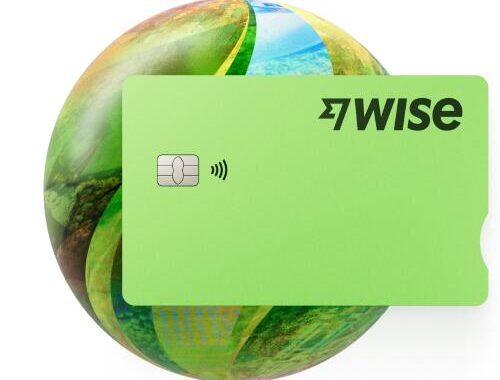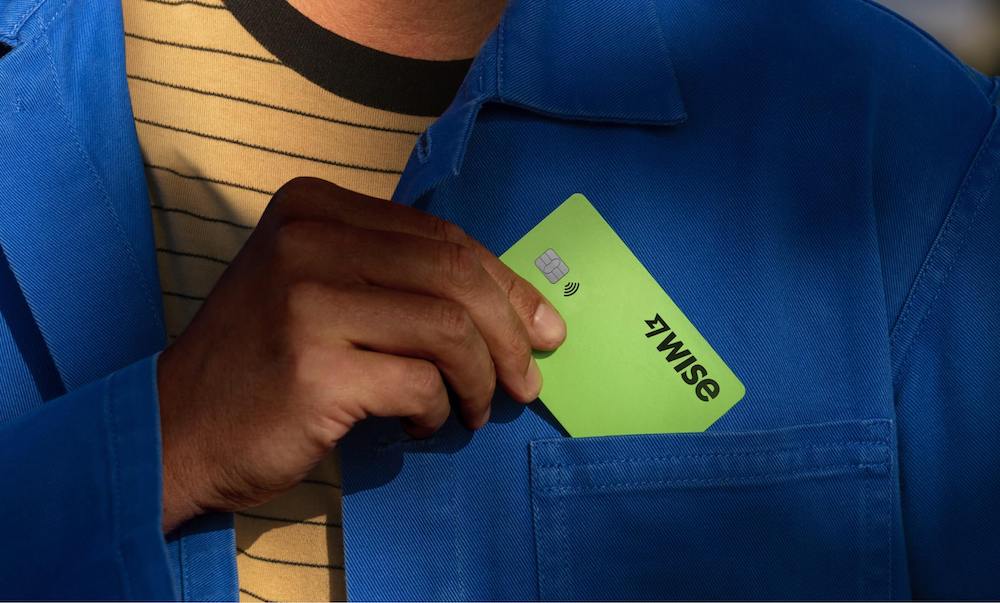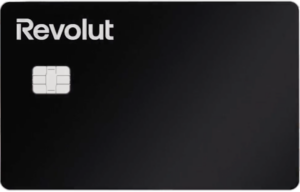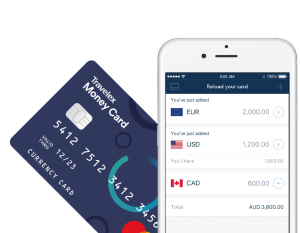The 5 Best Travel Cards for New Zealanders to use in Australia
If you’re travelling to Australia - or anywhere else in the world for that matter - it’s important to work out how you’ll manage your travel money while you’re there in advance. That’s the best way to make sure you minimise foreign transaction fees, and get the best available combination of convenience and cost. This guide walks through the different types of travel money cards, and gives a couple of examples of the best options available on the New Zealand market for each card type.
Kick start your research into the best travel money cards for Australia, based on your needs, with this handy guide.
- Wise - our pick for travel debit card for Australia
- Revolut (Standard Account) - travel debit card for Australia
- Travelex Money Card - prepaid card for Australia
- Westpac Global Currency - prepaid card option for Australia
- American Express Airpoints Card - travel credit card option for Australia
- Westpac Hotpoints World Mastercard - travel credit card option for Australia
Wise - our pick for travel debit card for Singapore
If you’re thinking of a travel debit card to make spending in Singapore easier, check out the Wise international debit card. You can open your Wise account online or with the Wise app, to hold and exchange 50+ currencies, including SGD easily and with the mid-market exchange rate.
There’s a one time fee of 14 NZD to get your Wise card, with no monthly charges, no inactivity fee and no minimum balance to worry about. Just top up in NZD, and either switch to SGD using the Wise app, or just let the card convert for you at the point of payment. In either case you’ll get the mid-market exchange rate and low fees from 0.43%.
Click here read more on how Wise works
Click here to see the full list of cards and how Wise compares
What are travel cards?
A travel money card can be a debit card or credit card, and may come from a bank or a specialist provider. In either case, the features and fees associated with the card are optimised for international spending and cash withdrawals.
The features and fees available from different travel money cards vary quite widely. Depending on the card you pick you might be able to hold multiple currencies, access rewards and travel perks like lounge access, cut out foreign transaction fees, or earn extra travel related points and cash back. Whichever card you pick, you’ll be able to tap and pay conveniently in stores, and make secure cash withdrawals in the local currency wherever you are.
Related: Everything you need to know about International Debit Cards
6 travel money cards for Australia compared
To start off, let’s look at 6 different travel cards, covering all the different card types we’ll explore. Here we’ve got an overview of the key features and fees you should know about. We’ll look at these cards in more detail later.
| Provider | Type | Delivery fee | Australia ATM fee | Interest rate | POS fees | Exchange rate |
|---|---|---|---|---|---|---|
| Wise travel debit card | Debit | 14 NZD standard card fee
Optional express delivery from 17.4 NZD |
Up to 2 withdrawals, to the value of 350 NZD free per month
1.75% + 1.5 NZD after that |
Not applicable | Free to spend a currency you hold | Mid-market exchange rate |
| Revolut card (standard account) | Debit | Standard delivery 9.99 NZD
Express delivery 33.99 NZD |
Up to the value of 350 NZD per month with no fee
2% fee after that |
Not applicable | No fee to spend a currency you hold | Mid-market exchange rate within market hours to 2,000 NZD a month - 0.5% fair usage fee after that
1% out of hours exchange fee |
| Travelex travel money card | Prepaid debit | Fee is set by the distributing outlet | No Travelex fee applies | Not applicable | Free to spend a currency you hold (exchange rate markups may apply when you exchange within your account) | Network rate
4% fee to spend a currency you don’t hold in your account |
| Westpac Global Currency Card | Prepaid debit | No fee | No Westpac fee | Not applicable | Free to spend a currency you hold (exchange rate markups may apply when you exchange within your account) | Mastercard rate
5.95% fee to spend a currency you don’t hold in your account |
| American Express Airpoints Card | Credit | No fee for delivery and no annual fee | 5 NZD + applicable interest | 22.95% indicative rate (variable) | 2.5% foreign transaction fee on all overseas spending | American Express rate + 2.5% |
| Westpac Hotpoints World Mastercard | Credit | No delivery fee - 285 NZD annual fee | No Westpac fee - interest applies at 22.95% | 16.95% indicative rate (variable) | 1.95% foreign transaction fee on all overseas spending | Mastercard rate + 1.95% |
- Details correct at time of writing - December 14th 2023
As you can see, each different type of card - and each individual provider - has their own features and fees which may make it more suited to one customer than another. Generally, having a credit card can be handy if you want to spread the costs of your trip out over months - but credit cards can be more expensive for day to day international spending and withdrawals.
Having a travel debit card offers you options to hold a foreign currency balance, and can come with great extra perks like some low or no fee currency conversion and ATM withdrawals. Which works for you will depend on your specific needs - we’ll explore the detail of each card type, and our top picks, next.
detail in a moment, so you can see if any suit your needs.
Quick summary: Best travel cards for Australia
- Wise travel debit card: Hold and exchange 40+ currencies including AUD, with the mid-market rate, spend with no foreign transaction fee and get some free ATM withdrawals monthly
- Revolut (Standard Account) travel debit card: Hold AUD and a selection of other currencies in your account, with some no fee currency conversion and ATM withdrawals monthly
- Travelex travel money card: Hold 9 currencies, including AUD, and spend globally - cards can be picked up in a store instantly if required
- Westpac Global Currency prepaid travel card: Hold 9 currencies, including AUD, with a prepaid travel card issued by a major local and international bank
- American Express Airpoints travel credit card: Spread the costs of your trip over a few months, with no annual fee and ways to earn Air New Zealand Airpoint dollars as you spend
- Westpac Hotpoints World Mastercard travel credit card: Earn rewards on spending, get complimentary travel insurance and lounge passes, for an annual fee
What are the different types of travel cards?
Generally, travel money cards can be split into 3 distinct card types. Different card types have some similar features - but the specific details of each card will come down to the provider terms and conditions. In this guide we’ll explore the following common travel card types:
Let's have a look at our top picks for the three best travel cards for New Zealanders heading to Australia.
Travel Debit Cards
Travel debit cards can be used as conveniently as any other debit card you might have in your wallet, but come with features which are optimised for international use, such as options to hold a multi-currency balance, cheap or free currency conversion and low or no fee international ATM withdrawals.
Aside from the extra features you might find compared to using your bank card, they can also offer peace of mind from a security perspective. As the travel debit card isn’t linked in any way to your primary NZD everyday account, even if you’re unlucky and lose your card or have it stolen, you can freeze or cancel it without needing to cancel your bank card.
Wise - travel debit card for Australia
Order a Wise travel debit card which comes with a multi-currency Wise account which can hold 40+ currencies including AUD. There’s no foreign transaction fee to pay with Wise, and it’s free to spend any currency you have in your account. If you don’t have the currency you need in your account, the Wise Card will use the mid-market exchange rate to convert from your available balance at the point of payment, with low fees from 0.43%.
There’s a one time fee to get your physical Wise card, which also comes with a virtual card for online and mobile payments - plus you’ll get some fee free ATM withdrawals every month for those times only cash will do.
Revolut travel debit card
Revolut customers in New Zealand can open a Revolut Standard account with no monthly fee to pay, to hold multiple currencies including AUD, and get a linked travel debit card for convenient spending. When you use Revolut you’ll be able to make weekday currency conversions with no fee to your plan limit - 2,000 NZD a month for Standard plans - before paying any fees. Once you’ve exhausted your plan limit there’s a fair usage fee of 0.5%, and if you’re converting at the weekend when global markets are closed, there’s also a 1% fee to pay.
As with Wise, you get some no fee ATM withdrawals monthly, too, which means you can get cash as and when you need it when you travel.
Pros and cons of using debit travel cards in Australia
| Pros of using debit travel cards in Australia | Cons of using debit travel cards in Australia |
|---|---|
| ✅ Cards are linked to multi-currency accounts for global spending
✅ Choose from cards with no annual or monthly fee for occasional use ✅ No interest or penalty fees to pay ✅ Usually issued on major networks which are accepted worldwide ✅ No credit checks needed |
❌ Some service and transaction fees apply, depending on how you use your card
❌ You won’t usually earn rewards as you might with a credit card ❌ Online providers usually have no face to face service option |
How much does a travel debit card cost?
Travel debit cards have their own fee schedules which can vary quite a lot. You’ll often find there’s no fee to get your card, aside from a delivery charge, and cards with no annual or ongoing fees are also available. This means in effect that you’ll only need to pay for the services you use, which will have pre-agreed transaction charges that are available in your card’s terms and conditions. Fees may apply for currency conversion, ATM withdrawals or sending and receiving payments, for example. However, overall, travel debit cards are usually a pretty cheap option to pick for spending in Australia or elsewhere in the world.
How to choose the best travel debit card for Australia?
There’s not really any one best travel debit card - it’ll come down to your personal preferences. Naturally if you’re heading to Australia, it makes sense to look for a card with a linked account which can be used to hold and exchange AUD. That means you won’t pay a foreign transaction fee when you spend your AUD balance, and it can also make it easier to set your travel budget in advance. It’s also worth looking for a card which has low or no fees for the type of transactions you’ll need to make often, so you can keep costs down overall.
Is there a spending limit with a travel debit card in Australia?
Different travel debit cards have their own limits, which may apply based on different spending categories. For the cards we looked at above, the Wise card has a monthly spend limit of 52,500 NZD, while the Revolut card lets you set your own card limits in the Revolut app to make sure it’s at a level you’re comfortable with.
ATM withdrawals
Making cash withdrawals abroad is often the most convenient way to make sure you have some money in local currency, without needing to carry so much it feels risky. Just take out money as and when you need it - and with a travel debit card you may be able to make some ATM withdrawals overseas with no fees, as well. Both the Revolut and Wise card allow you to make up to 350 NZD a month of no fee cash withdrawals before fees kick in. Bear in mind that for Wise you’ll only be able to take out your 350 dollars in one or two instalments to avoid paying a small fee.
Prepaid travel cards for Australia
You can get a prepaid travel card from a specialist provider or a bank. You’ll need to add a balance to your card before you can start spending, but these cards are designed to cover several major global currencies for holding and exchange. That means you can add a balance in AUD before you travel, and spend for free once you arrive. Currency exchange markups may apply, and it’s also useful to note that prepaid travel cards may have a foreign transaction fee if you don’t convert your balance to AUD before you start spending during your trip.
Travelex Money card - prepaid card for Australia
The Travelex card can be used to hold, spend and withdraw 9 currencies, including Australian dollars. It’s free to spend a currency you hold in your account, but a conversion fee of 4% will apply if you don’t have the right balance to cover your spending. That means you need to be sure to switch over to AUD in advance to avoid unnecessary costs.
The Travelex card has no ATM fee when you make a cash withdrawal, and it’s also handy because you can pick one up in minutes in a Travelex store. Just order online to get a travel card for next day collection, or call into a store with your ID and proof of address, to get one there and then.
Westpac Global Currency prepaid travel card
You can apply for your Westpac Global Currency card online and it’ll arrive by post in 5 to 10 days. Once you have it you can top up from your bank with no fees, and there are no monthly charges to worry about. Cards support 9 currencies including AUD - with no fee to spend a currency balance you already have. If you don’t have the currency you need in your account and make a payment or withdrawal, a foreign transaction fee of 5.95% applies.
Westpac doesn’t charge you for taking out money abroad, although there may be a fee if you make a domestic ATM withdrawal.
| Pros of using prepaid travel cards in Australia | Cons of using prepaid travel cards in Australia |
|---|---|
| ✅Multi-currency holding options
✅Cards are available that you can pick up in store instantly ✅Manage your account digitally with an app ✅Not linked to your normal NZD account, adding a layer of security ✅24/7 phone support often available if you have a problem with your card |
❌Limited range of currencies supported
❌Fees can apply when spending an unsupported currency ❌Inactivity and top up fees can apply |
How much does a prepaid card cost?
There are several different prepaid travel cards on the market in New Zealand, so the costs associated will depend on which one you select. Some - like the Westpac card - have no initial fee, but transaction fees are still likely to apply. Currency exchange can include a markup which is a fee that’s quite difficult to spot, and which applies when you top up in a foreign currency or exchange money within your digital card account. Foreign transaction fees are also high if you spend in a currency you don’t hold in your account.
How to choose the best travel prepaid card for Australia?
There’s not a best prepaid card - but some cards may suit you better than others. Travel prepaid cards can have foreign transaction fees when you spend in a currency you don’t hold in your account - either because your balance doesn’t cover the spending, or because the card can’t hold the specific currency. AUD is a commonly supported currency - but if you intend to use your card elsewhere on your next trip it’s worth picking one which covers the currencies you need often as these foreign transaction fees push up overall costs significantly.
Prepaid travel card spending limit
Some limits apply to how you load and use your prepaid travel card. For both the Travelex card and the Westpac card, the following limits apply:
- Maximum load over a year - 75,000 NZD (across all currencies)
- Maximum POS transactions in 24 hours - 15,000 NZD
When it comes to topping up your card, you can add up to 25,000 NZD in 24 hours by bank transfer to your Westpac card, while the Travelex card has a maximum load in 24 hours of 10,050 NZD.
ATM withdrawals
Neither of the prepaid travel cards we’ve featured have their own ATM fees when you’re abroad, although the ATM operator might impose their own costs. Both have a maximum total withdrawal amount of 3,000 NZD in a 24 hour period. Specific ATMs might also have limits which can be lower than this.
If you’re making a domestic ATM withdrawal, bear in mind that the Westpac card has a 4 NZD fee, while the Travelex card has a 2.95% fee for any domestic transaction, which pushes up the price significantly.
Travel Credit Cards
If you’re hoping to spread the costs of your trip to Australia over a few months rather than paying for everything upfront, then you’re probably thinking of using a credit card. Getting a travel credit card can make sense as you’ll earn rewards which you may be able to trade in for travel related rewards, and - depending on which card you pick - you may also get other travel perks like lounge access or insurance.
There are times when having a travel credit card is very handy, such as when you need a payment guarantee for hiring a car - but in general, this can be a pretty expensive way to pay due to annual fees, interest and foreign transaction fees. That means it's important to weigh up the costs and benefits before you sign up.
Westpac Hotpoints World Mastercard travel credit card
With the Westpac Hotpoints World Mastercard you’ll need to pay an annual fee, but this can be waived if you use your card very often. Once you’ve got your card you’ll unlock a load of benefits including ways to earn Hotpoints, airport lounge access, and travel insurance for trips of up to 120 days at a time. As with all credit cards, there are fees to consider.
Although this card doesn’t have a cash advance fee, interest will apply which can start immediately once you’ve made a cash withdrawal. Plus, there’s a foreign transaction fee of 1.95% on all overseas spending. The interest rate of 16.95% indicative (variable) is relatively low, though.
American Express Airpoints - Travel credit card for Australia
The American Express Airpoints card lets you earn Airponts dollars to spend on New Zealand Air flights. You’ll get one Airpoints dollar for every 100 NZD you spend, and you can get a card with no annual fee, plus extra supplementary cards for family members with no fee, if you want to accumulate points faster. There’s a 5 NZD cash advance fee if you use this card at an ATM, and a 2.5% foreign transaction fee as well. It’s also worth bearing in mind that American Express is not always accepted as a payment method, so having a few different options on you at any given time is a good plan.
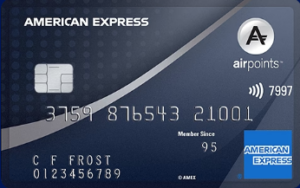
Pros and cons of using credit cards in Australia
| Pros of using credit cards in Australia | Cons of using credit cards in Australia |
|---|---|
| ✅Convenient to use if you want to spread your costs over several months
✅Earn rewards as you spend, such as air miles and cash back ✅Issued on globally accepted payment networks ✅Variety of different cards available depending on your personal needs ✅Safe to use, often with extra protections on spending |
❌You’ll usually pay foreign transaction fees
❌Interest charges apply if you don’t repay your bill in full every period ❌Other fees can apply including annual fees and cash advance fees |
How much does a travel credit cost?
While there’s not usually a charge to get a travel card, there are annual fees for some which may be paid either once a year or split into 2 instalments. The American Express Airpoints card has no annual fee, but the Westpac card we profiled earlier charges 142.5 NZD every 6 months, waived if you spend 50,000 NZD or more in the 6 month period. Aside from annual fees, credit card fees include interest, penalty fees if you don’t pay on time, foreign transaction fees and cash advance fees. You’ll need to read your card’s terms and conditions carefully to check you understand what you’ll be liable to pay for your specific card.
How to choose the best travel credit card for Australia?
Getting the best travel credit card for Australia will be a question of your personal preferences and needs. One thing to watch out for is the fees you’ll pay to unlock travel credit card benefits. Look at the annual fees, interest and any foreign transaction fees in particular, and weigh these costs against the reward earning opportunities to make sure you get the best balance for your spending.
Travel credit card spending limit
When you get your travel credit card you’ll be set a credit limit. You can spend up to this limit every month, and then you’ll need to repay in full to avoid interest fees. Credit limits can vary based on your credit score and the specific provider and card, but you’ll be notified of yours when you get your card.
ATM withdrawals
Using a credit card in an ATM can be pretty expensive. That’s because cash advance fees are common, and when you take cash from an ATM you’ll usually start to be charged interest instantly, and often at a higher rate compared to making a POS purchase. For the cards we looked at earlier, the American Express Airpoints card has a 5 NZD cash advance fee plus interest, while the Westpac card doesn’t have a cash advance fee, but instead uses interest which applies instantly at 22.95%, a higher rate compared to POS transactions.
How much money do I need in Australia?
The costs of your trip to Australia will vary a lot depending on what you intend to do. While overall costs of living aren’t hugely different, travelling as a tourist can mean paying more for restaurants and activities, not to mention travel within the country, hotels, tips, treats and more. We’ve covered a few key costs below, but it’s important to do your own research before you travel to make it easier to set a realistic travel budget.
| ✈️ Flights to Australia | Non-stop flights available to various airports in Australia. At the time of writing you can fly for as little as 650 NZD from Auckland, to several cities in Australia. |
| 🛏️ Accommodation | Accommodation prices vary widely, depending on where you’re going, the time of year, and the specific destination within Japan |
| 🥣 Lunch in a restaurant | A cheap meal will set you back about 30 NZD |
| 🚍 Transportation | A one way public transport ticket costs around 5 NZD |
- Details correct at time of writing - 14th December 2023
Do some detailed research to see how much things are likely to cost based on your plans and where you’re headed, so you can set your budget. Get more detailed cost information by city, from Numbeo.com.
Conclusion: Which travel money card is best for Australia?
Using a travel card when you go to Australia can be a good way to spend and make cash withdrawals with lower overall costs. Different cards have their own features, but in all cases you’ll be able to tap and pay and make cash withdrawals in AUD just like you would at home.
As the features and fees of different cards can vary a lot, you’ll want to compare a few before you pick the right one for you. If you’re looking for a travel debit card with low fees and broad multi-currency functionality, check out the Wise card. If you’d rather have a card for occasional use which has some no-fee transactions available across both ATM withdrawals and currency conversion, the Revolut card is also well worth a look. Use this guide to kick start your research - and find the perfect card for your next trip to Australia.
FAQ - Best travel cards for Australia
Can you withdraw cash with a credit card in Australia?
You can withdraw cash with a credit card in Australia at any ATM where your card’s network is accepted. Fees may apply, including cash advance and interest charges, and extra costs added by the ATM operator. Using a travel debit card, such as the Wise card, which has some fee free ATM withdrawals every month, can often be cheaper than using a credit card.
Can I use a debit card in Australia?
Yes. Debit cards are widely accepted in Australia for spending in stores and restaurants, and for making cash withdrawals. Just look out for the card network symbol displayed by the checkout or on the ATM you’re thinking of using.
Are prepaid cards safe?
Prepaid cards are safe to use when you travel as your travel money is held separately to your regular NZD funds. That means that even if you’re unlucky enough to have your card stolen, thieves can’t access your main bank account. Plus, you’ll be able to make cheap or free ATM withdrawals as you travel, so you don’t have to carry around too much cash at any one time.
What is the best way to pay when travelling in Australia?
There’s no single best way to pay in Australia - card payments are often supported and can be convenient and secure. There are a few occasions when cash works better, such as in a local market - but generally having a selection of payment methods on you, including a low cost travel debit, prepaid or credit card, as well as some cash, means you’ll always be able to pick the best option for the specific transaction type.

